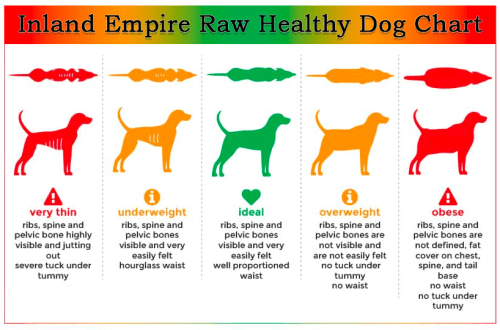
Scientific explanation of dog behavior
The science of dogs is evolving, and more and more researchers are investing time and resources to understand the inner workings that make our best friends so intimately connected to humans. Now more than ever we understand the behavior of puppies – from the biological aspect to the psychological. Want to know what science thinks about your dog? In this article, we have collected the most interesting facts.
Contents
Why do dogs sleep so much?

You’ve probably wondered why your pet is constantly sleeping, sometimes even all day long. The amount of time a dog spends sleeping depends on many factors, including age, size, breed, health status, and level of physical activity. Animals with nothing to do during the day often sleep to ward off boredom, and simply because it is an enjoyable activity. Dogs need significantly more sleep than humans, according to members of the American Kennel Club. This is due to the length of REM sleep in dogs. While in humans, REM sleep is about 25 percent (the deepest and most restful part of sleep), in dogs it is only about 10 percent. It turns out that pets need to sleep longer to compensate for the imbalance.
What do dogs say when they bark?
Why is your dog barking? While barking can have many causes, biologists previously believed that barking did not depend on a “message” transmitted by animals. Further research in the biology of the dog found that the elasticity of its vocal cords allows it to subtly change the sounds of the bark, giving it different meanings, the authors of the article in Scientific American say.
The spectrograms of dog barks show differences in duration, height, and amplitude, the values of which vary depending on the situation. The same applies to growling. Although researchers are not yet entirely clear on what the different types of barks and growls mean, experiments have shown that animals react differently to sounds made by other dogs depending on the situation. For example, scientists have recorded a dog growling while eating and growling at a stranger. When a dog that was offered a treat was played a growl while eating, it showed more uncertainty than when it was played a growl at a stranger. Other experiments have shown that dogs and humans are more likely to respond to “stranger barks” than to other types of barks. More research is needed to decipher each type of bark and growl, but it is becoming clear that they carry elements of communication and are not just fun.
What speed can a dog develop?
How fast is the dog running? In fact, it is individual for each pet. Running speed largely depends on the size, shape of the body and length of the legs, as well as the age, health and physical condition of the animal. The Greyhound can reach an average speed of 72 km/h and is the fastest breed in the world with individual members reaching speeds of up to 80,5 km/h, according to Wag!. While the streamlined Greyhounds and other breeds such as the Whippet and the Afghan Hound seem to have been specifically designed for high speeds, all dogs without exception are able to streamline their bodies to improve aerodynamics while running, or flattening the ears to reduce wind resistance, or tilting them back to keep them out of the way.
The way a running dog’s paws move also changes. While walking, the dog simultaneously moves the right and left paws, and while running, it makes large horizontal jumps on the front and hind legs, folded together, which allows it to develop greater speed.
How high can a dog jump?
For some dogs, climbing onto the sofa is no problem, others need a ladder to take a nap next to you in their favorite chair, and for others, even the fence around the house is not a big obstacle, because they jump beautifully. Like the ability to run, the ability to jump and the height of the jump depends on the size, strength, age, health and physical condition of the animal. Cuteness reports that the maximum height a dog can jump is 1,8 m, but the most interesting thing is that small breeds are able to jump several times their own height. Another indicator of dog jumping ability is the distance a dog can jump long. For example, dogs are trained to take a run into the water to compete in diving competitions, and some four-legged participants can jump as much as 9 meters, according to The Labrador Site.
Do dogs have good eyesight?
Despite the problems with distinguishing colors, the dog’s eye sees things that are invisible to us. The authors of the BarkPost website list objects that animals see but humans do not: for example, the Earth’s magnetic field and pictures that are visible to us only in the ultraviolet. But this does not mean that a dog’s vision is better than a human’s. According to Veterinary Vision, a dog’s peripheral vision is better due to the eyes located on the sides of the head, but visual acuity (the ability to focus on an object) is only 20-40% of that of a human. This means that the dog sees an object that a person with 27% vision sees at a distance of 6 meters, only at a distance of XNUMX meters. For this reason, our pets often rely on other senses to navigate the world around them.
Do dogs have good hearing?
What is your dog’s hearing? Dogs’ acute hearing is not a fantasy at all, it is a unique biological advantage that has helped them for thousands of years. According to Petful, a dog can hear sounds four times the distance a human can hear them. Dogs have the ability to use each ear individually and change the direction in which they listen, allowing them to focus on a particular sound. This is possible thanks to the 18 muscles responsible for the movement of the ear – this is three times more than in humans. Dogs are also able to hear different frequencies, which is why the dog whistle has such an effect on them even when we don’t hear anything. And finally, dogs, like people, have the ability to selective hearing, so when you call a pet walking near the house and it seems that he is ignoring you, then he probably is.
Why are dogs so happy to meet us?

When you return home at the end of the day, even after an hour or two, most likely your dog will be in seventh heaven with happiness. Is always! Is always! Is always! The wild reaction of the dog to the return of the owner is one of the many reasons why we love them so much. But why are they so happy about the arrival of the owners?
This reaction is determined by three main factors, the authors of the site io9 say. In studying brain scans of dogs exposed to various scents, dog behavioral researchers have noticed that the smell of a familiar person activates the pleasure center in their brain in a way that none of the suggested smells does. This suggested that pets not only distinguish between people and other dogs, but also sincerely love spending time with their owners.
Another study involved a cognitive process experiment designed to observe children who saw their mothers after their mothers were gone to analyze how dogs react to meeting their owners after separation. This study showed that the reactions of children and dogs are very similar. We must not forget that dogs are social animals that do not like to be left alone. For them, our return is a salvation from loneliness and boredom. And if you add up all the factors, it becomes quite clear why dogs are so happy when they see their beloved owners.
Why are there so many different dog breeds?
The dog is one of the most diverse animal species on the planet. The Kennel Club of England recognizes 218 separate breeds of dogs, not counting regional varieties, designer hybrids, mixed breeds and happy mongrels of unknown breeds.
With all the variety of color, shape, size and temperament, dogs, according to scientists, began to separate at the genetic level from wolves about 27 years ago. Thanks for the diversity of dog breeds, we should be those ancient hunter-gatherers who first got pets. No one knows for sure when the breeding of animals with similar characteristics for certain traits began, but in doing so, man has inadvertently interfered with gene selection, splicing together dominant genes and manipulating their expression in generations of dogs.
While this practice continued throughout the period of animal domestication, in the XNUMXth century, selective breeding of dogs began actively: people began to create various breeds for aesthetic reasons and for the sake of novelty, and not in order to obtain the characteristics most suitable for hunting or herding. livestock. As this continues to this day, the number of breeds and their diversity continue to grow.
Without any doubt, dogs are special animals, and this is confirmed by our friendship with them. As the science of dogs uncovers more and more scientific facts, we learn more and more about our furry friends. But there’s one thing we can do without science: we don’t need to explain how wonderful our dogs are—everyone without exception.





